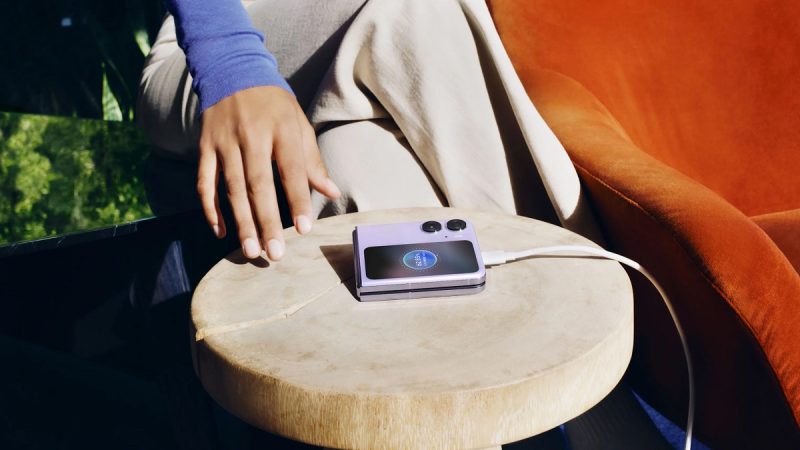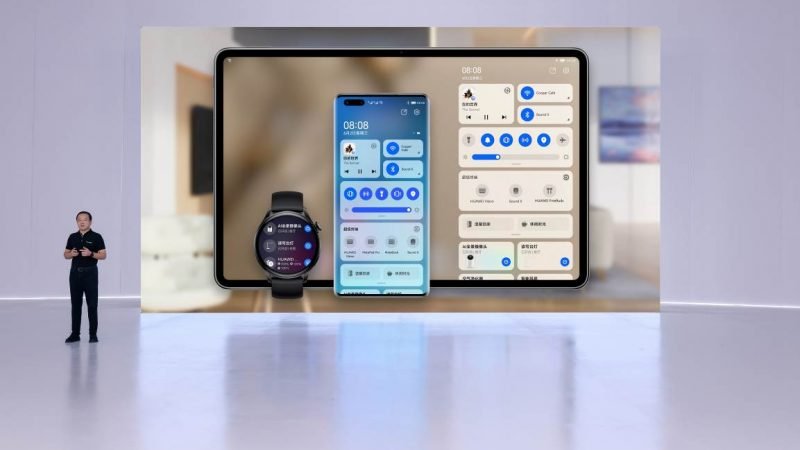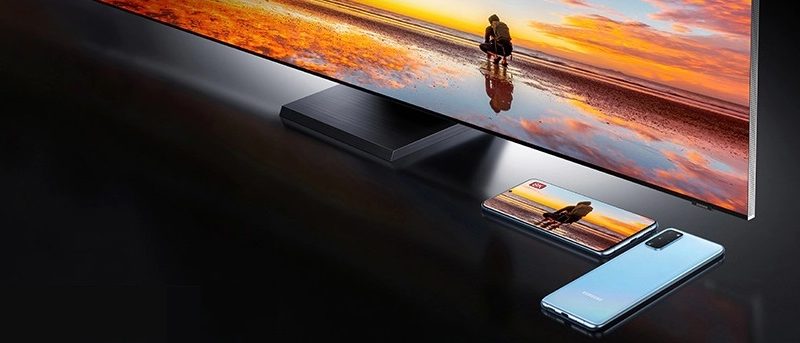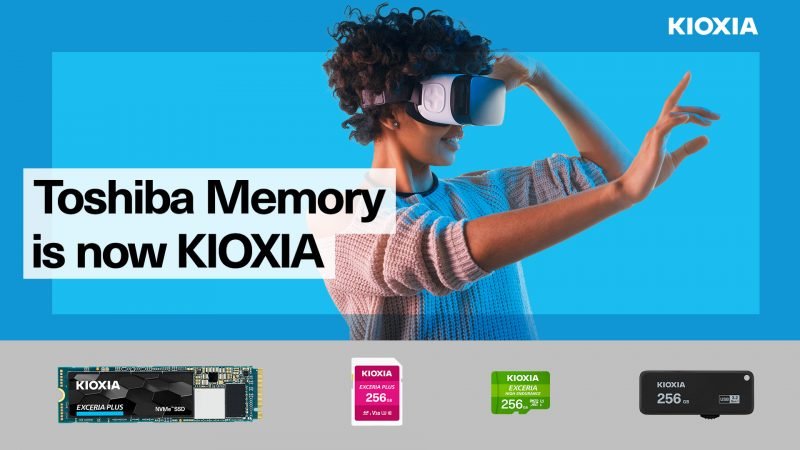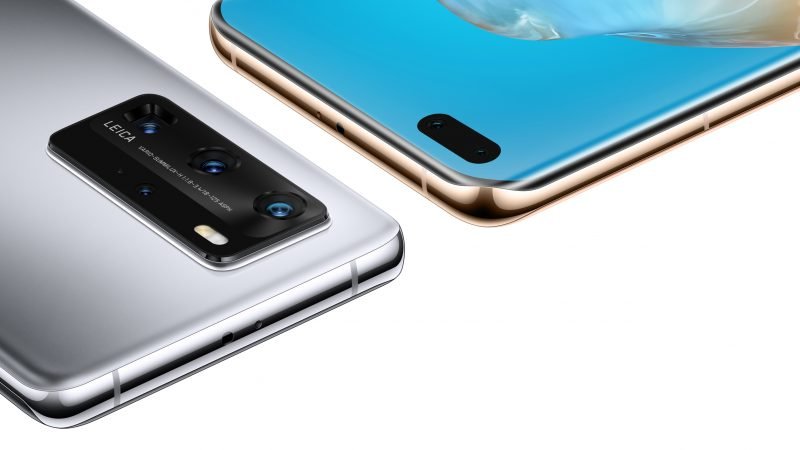Huawei Mate 30 Pro Hands-on Review
Huawei Mate 30 Pro – When’s a Launch not a Launch?
We were in Munich recently for the Huawei Mate 30 launch. We also spent some time with the new handset. While there was the usual rush of people posting their thoughts, we thought we’d take some time to reflect, and also see if we could get some more details – this was no ordinary launch.
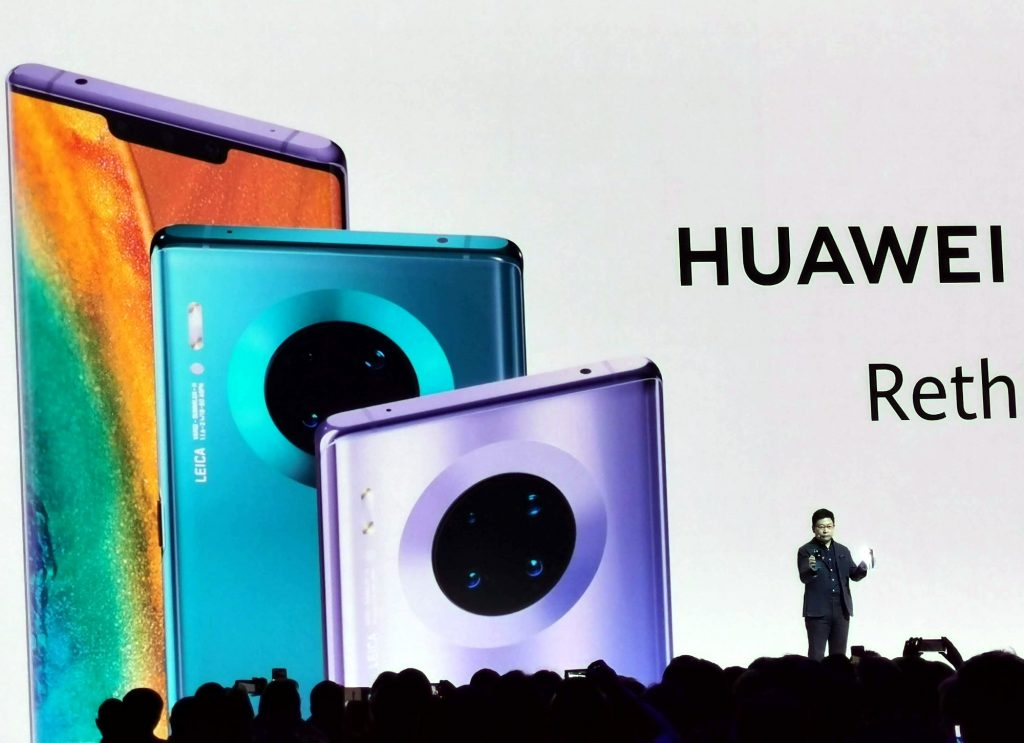
The Mate 30 is Huawei’s second hero phone of 2019, following the excellent P30 Pro which is still our daily driver – and camera.
Naturally, the Mate 30 sports usual expected upgrades of cosmetic tweaks, uprated display and cameras. So, what else were we waiting to find out? Well, this was no straight forward launch.
Awks
Unless you’ve been avoiding the news (which we totally understand), you will know that President Trump is upset with China and so has prevented the likes of Google playing with them. The upshot of this hissy fit is that Huawei is unable to release the Mate 30 loaded with the Play Store. The result of this is no Google Maps, Google Pay, Gmail app, you get the idea. It sucks.
As discussed with fellow tech journalists out there, everything felt a “tad awks” before, during and after the launch. That’s not to say it wasn’t impressive with many gasps, applause and the rest of it; it’s just that there was also a slight undercurrent to the whole proceedings.
Anyhoooo – enough of that. What about the phone?
Mate 30 Pro hands-on
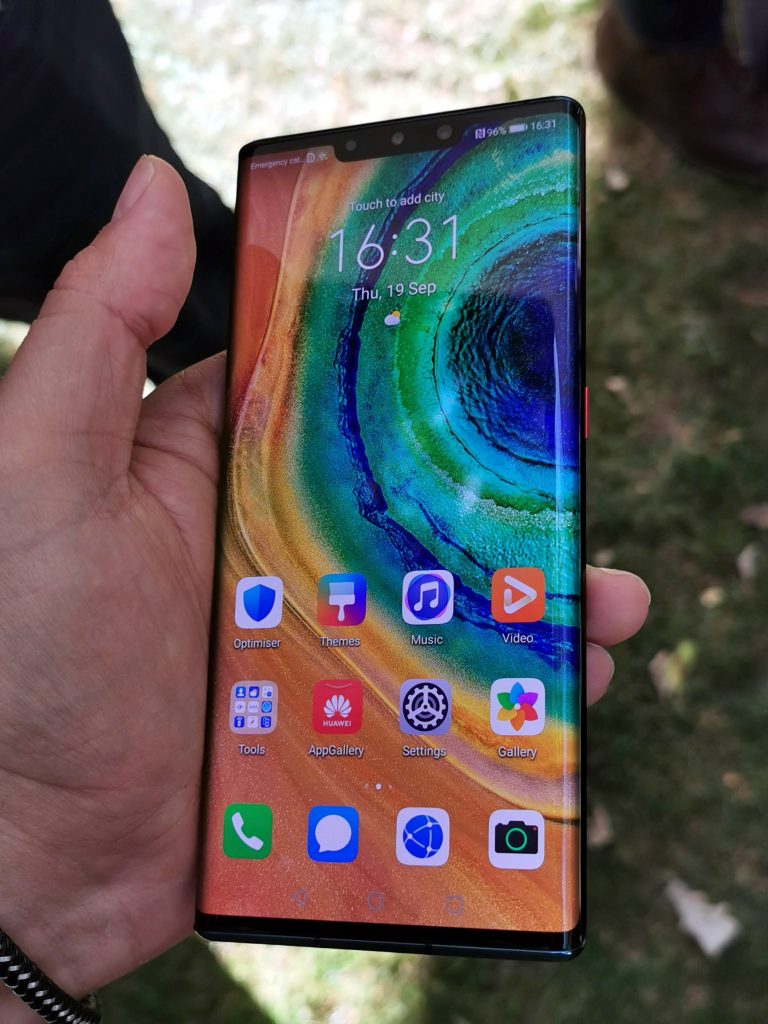
The Mate 30 Pro certainly has the looks and the spec to claim its crown as a flagship.
The newcomer boasts a curved ‘Horizon’ display, a super-powerful chipset, and a huge camera sensor. Additionally, there’s mind-melting slow-mo and 8K capture skills, ToF (Time of Flight) modules front and back, and a battery with super-stamina as well as a range of charging options.
Mate 30 Pro and Android
OK – let’s get tackle the irritating pachyderm in the room first. The Huawei Mate 30 Pro runs Android 10. Is that a confused look on your face after everything we’ve said? Let us explain – this is the AOSP version (Android Open Source Project) which is free to use across the world. All previous Huawei Mate phones used the “standard” version of Android, which includes all the proprietary software many of us use every day. So – you get Android, just not the Google apps.
Huawei already has the apps needed to replace much of the Google suite. There is an app store, a mail client, a browser, a fitness tracker and a cloud storage service, but we know that this might not be enough. We reckon we won’t see the likes of Netflix, WhatsApp, even Facebook appearing in the Huawei app store anytime soon – but we could be wrong. We suppose that some apps have browser versions we could use…
During our hands-on time with the phone EMUI10 (Huawei’s Android wrap) seemed to work smoothly with no hint of any loss of full-fat Android.
What were we waiting for?
Originally, Huawei’s Richard Yu stated that bootloader unlocking would be available to give customers “more freedom.”
We limited [bootloader unlocking] because we wanted to guarantee more security for consumers. But this time we will leave more freedom for the consumers so they can do more customisation by themselves.
Naturally, everyone read that as it’s making it easier to install Google apps.
That glimpse of light, however, was soon diminished after the company then said it has “no current plans” to allow bootloader unlocking.
Did Yu misspeak? Did he show Huawei’s hand too soon? Only those closer to the situation than us knows for sure.
Mate 30 Pro improved camera
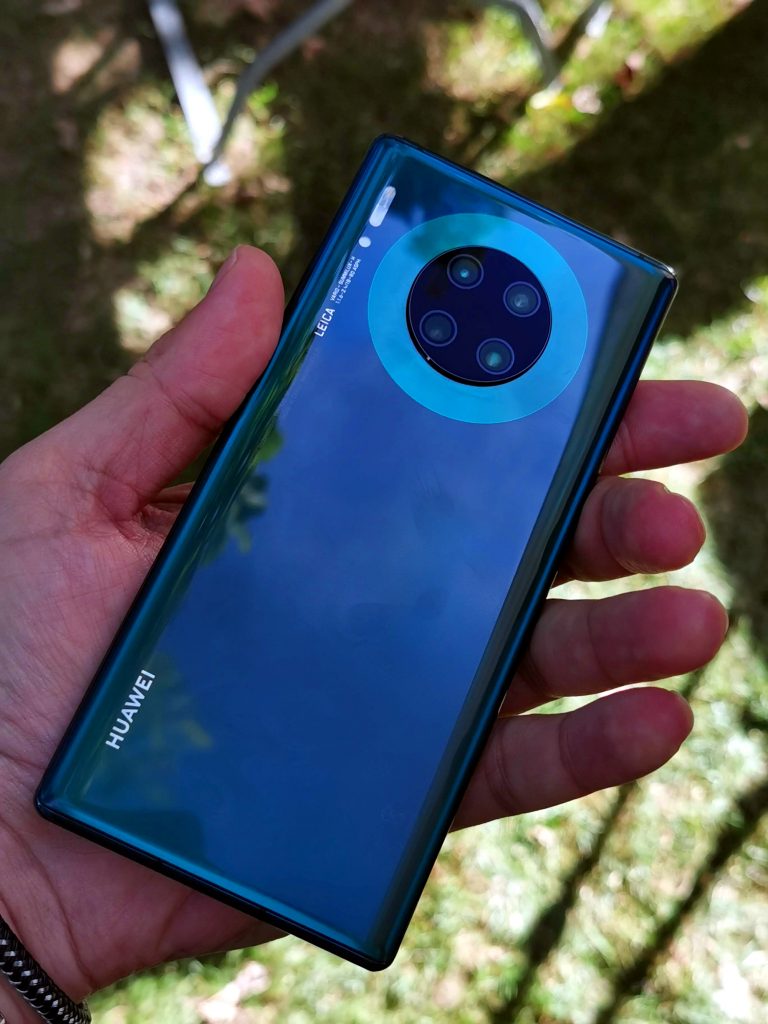
This is what most people will be interested in after the P30 Pro grabbed awards left, right and centre for its snapper.
Seeing the Mate 30 Pro in the flesh for the first time, the most noticeable thing that grabs you is the new circular lens array. Dubbed Halo the circular lens grouping looks great to us. If you recall, the 20 Pro rocked the square-style, much like the latest iPhone does.
Camera quartet
The flagship 2019 edition Mate boasts a quartet of cameras on its rear.
Firstly, there’s a standard-view 40-megapixel sensor, then an 8-megapixel 3x zoom and a 40-megapixel ultra-wide. Finally, there is the ToF (time of flight) depth sensor.
The P30 Pro is still king of the zoom, although the Mate 30 Pro is very capable; however, it is the Mate’s ultra-wide that steals the show with its performance thanks in part to its 1.54-inch sensor.
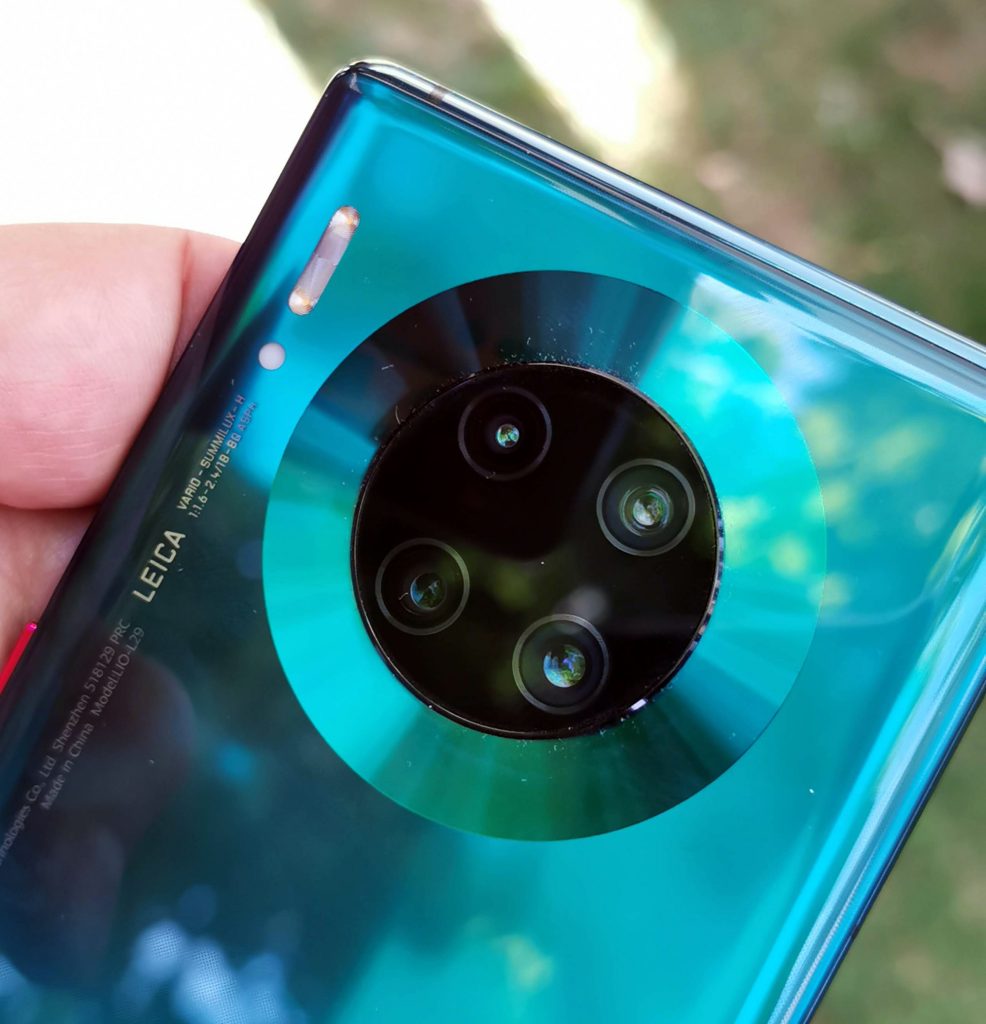
If you’ve used a P30 Pro, then the Mate 30 Pro’s camera app will feel very familiar. You can zoom in by 5x and still get decent results, or up to 30x if you don’t mind a slight hit-and-miss aspect to your shooting.
We weren’t able to test the Mate 30 Pro’s night mode, but it is still one of the P30 Pro’s stand-out skills, so we assume the new Mate will match it. Again, Huawei is using an RYB pixel set up in the main sensor that swaps the typical green pixels (RGB) for yellow pixels. The result is that the sensor can capture more light and so the bright f/1.6 lens with OIS, along with some software magic, means the phone can shoot pictures in near darkness.
The snaps we took in Munich (although not able to keep them) showed the expected good dynamic range, even without HDR engaged. The images seemed to have plenty of detail on screen with very low noise.
The Mate 30 Pro gives you a decent macro camera too, enabling you to take incredibly sharp shots as close as 2.5cm from the object.
Video
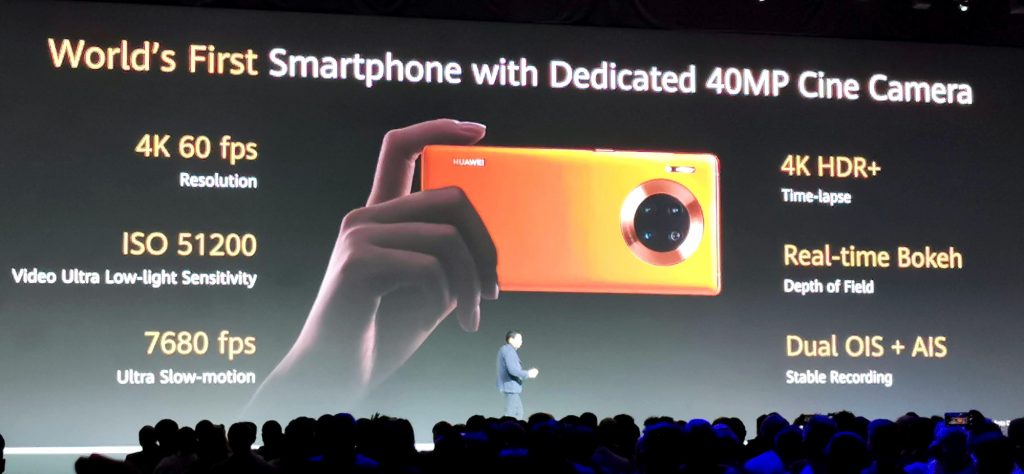
The Mate 30 Pro boasts a dedicated cine camera so videos promise to be top-notch.
Slo-mo is really impressive looking at the specs. Where 960fps has become the high-end mobile standard for slo-mo video, the Mate 30 Pro trumps that (so to speak) and goes up to 7,680fps, for 256x slo-mo.
This uses smart interpolation skills thanks to complicated algorithms that works out what the frame between two others should look like.
Would we ever use that setting? Perhaps not. However, that upper limit does mean that 64x, 32x, 8x and 4x is silky smooth.
Mate 30 Pro front cameras
On its front, the Mate 30 Pro sports another three lenses.
In addition to a primary 32-megapixel selfie snapper, the Mate 30 Pro features an ultra-wide-angle shooter and another ToF sensor.
Overall, the Mate 30 Pro is armed with a mind-bending total of seven cameras.
Curvy display
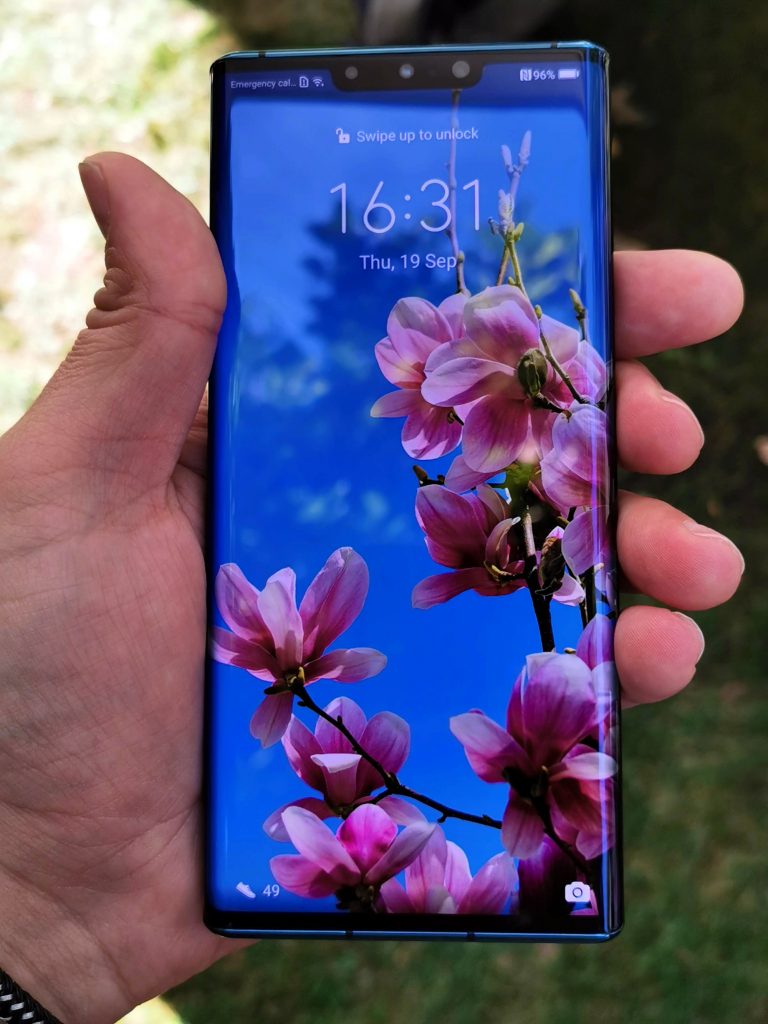
The Mate 30 Pro comes with what Huawei calls a “Horizon” display.
This essentially means the curves on the display’s sides are more prominent than on its curvaceous rivals such as the P30 Pro or Samsung Galaxy S10.
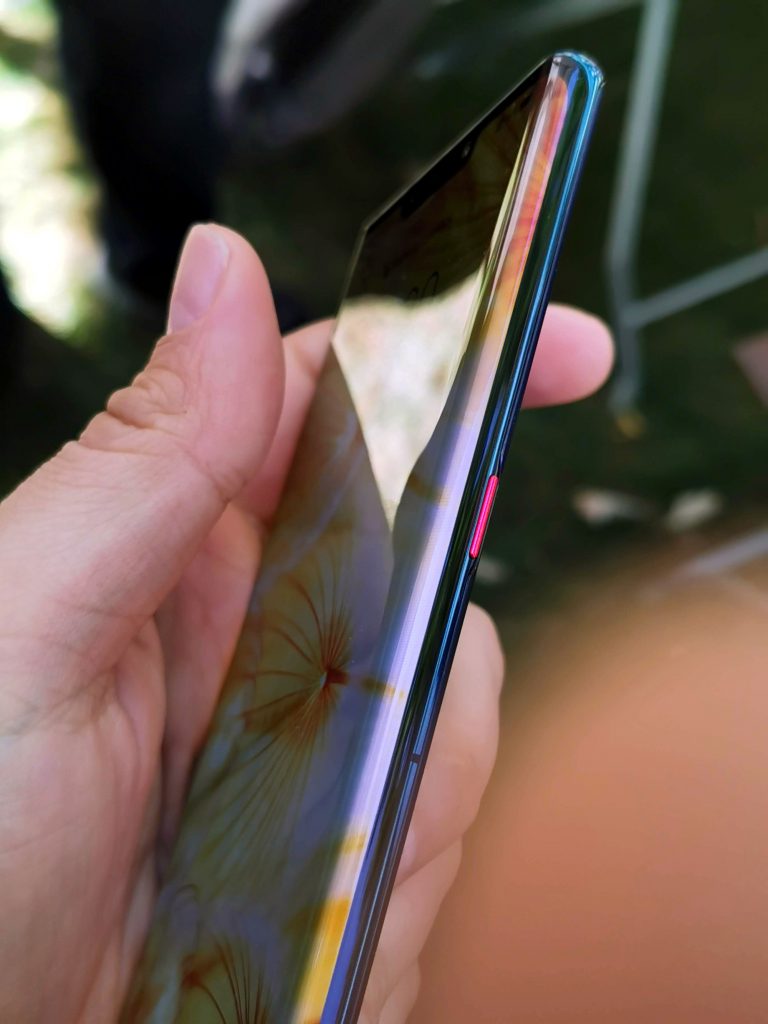
Also, the added curvature makes the hardware look more like a single piece of glass than any of its competitors. The display curves 88 degrees to the sides, and if you look at the phone head-on, you practically don’t see any side bezels.

The curvy 6.53-inch display is also called in for volume control
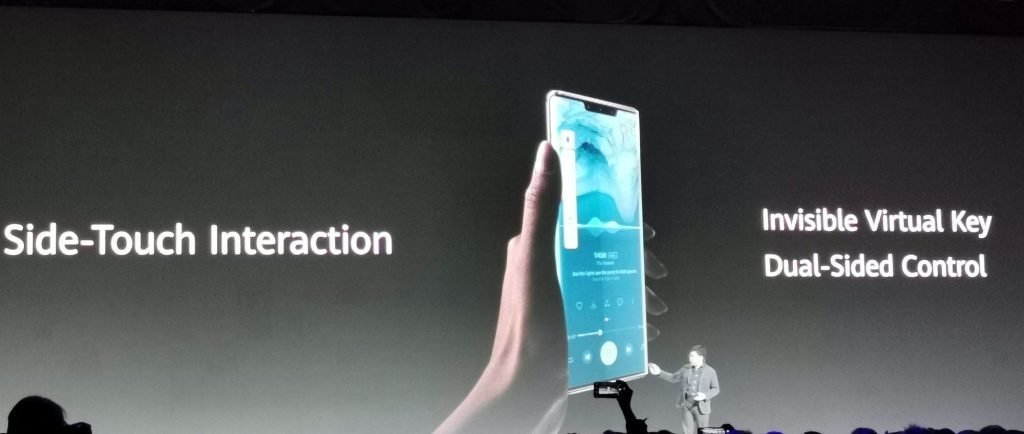
We were a little concerned about accidentally triggering things while the phone is in our hands with that extra bit of side-screen, but all seemed well. We were told that the side areas were “switched off” for the most part – which explains the need for the double-tap to wake the volume control.
Sophisticated notch
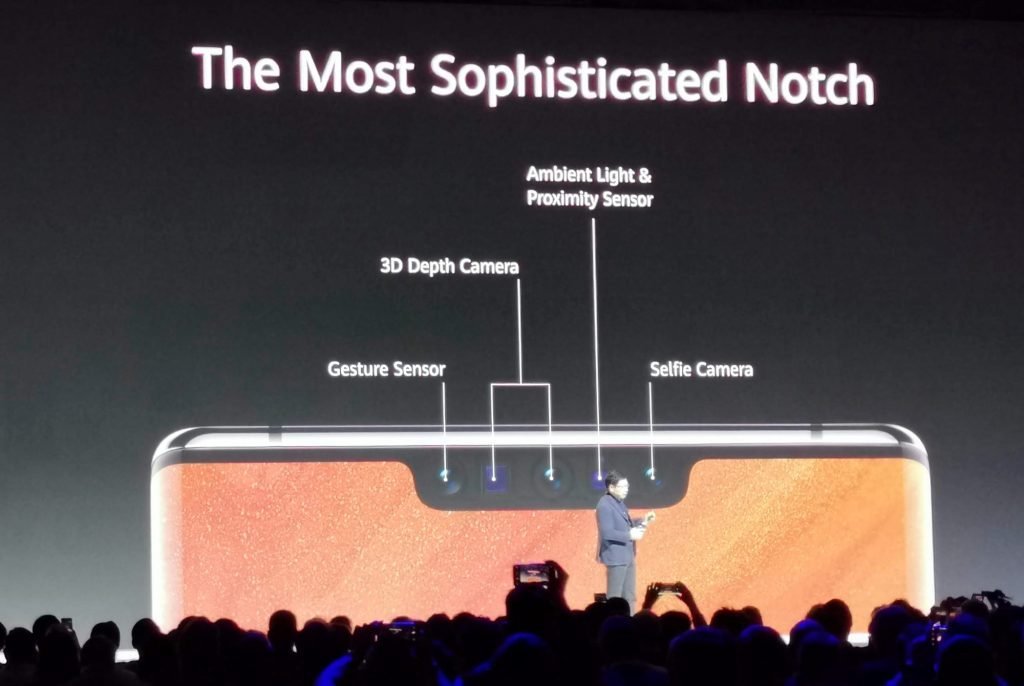
Huawei has created “the most sophisticated notch” – is this going to be the new battleground for phones?
It’s a lot smaller than the Mate 20 Pro‘s and still manages to pack in a gesture sensor, a 3D (ToF) depth camera, a proximity sensor and a selfie camera.
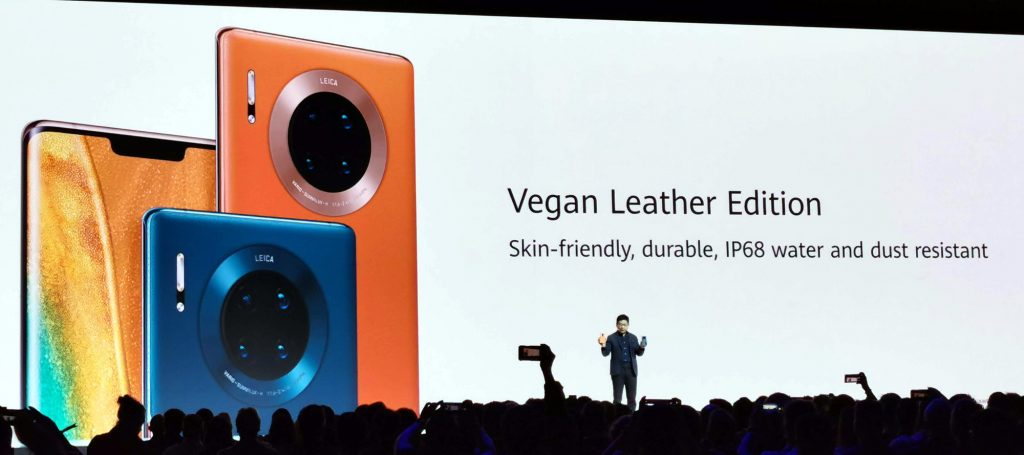
Rolling the Mate 30 Pro around in our hands it certainly feels like a premium device thanks to its all-glass and forged metal casing. Additionally, you get a choice of Space Silver, Emerald Green, Cosmic Purple and black colourways to choose from. There’s also cool-looking vegan leather options too, available in orange and green. We fell in love with the orange pleather in a rather major way.

The phone’s IP68 rating should protect it from water and dust, which is a good thing.
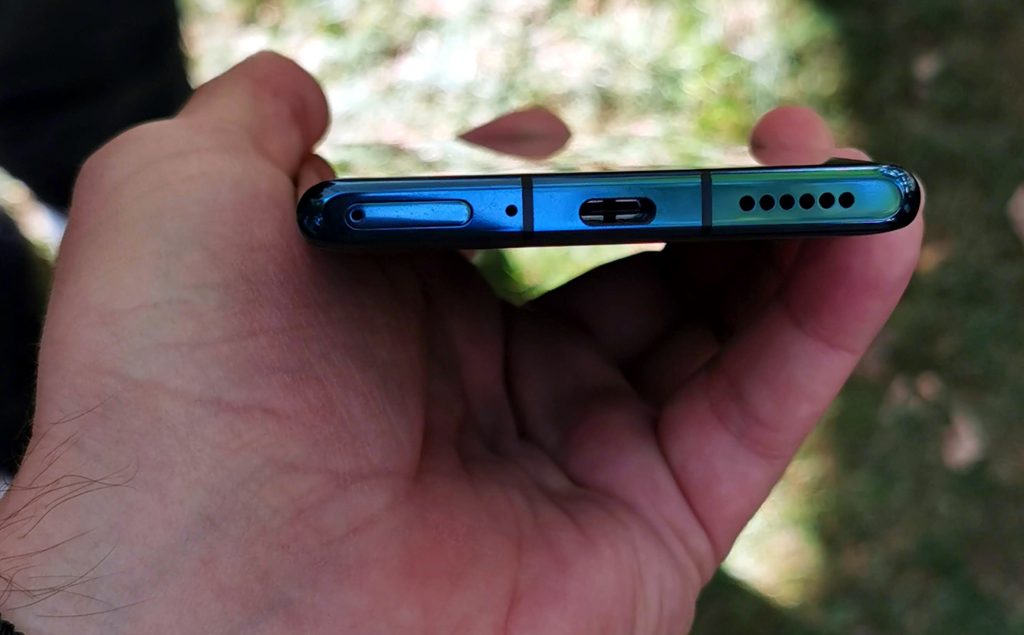
The single, bottom-ported speaker, however, not such a good thing.
5G-ready
The Mate 30 Pro is powered by Huawei’s new Kirin 990 chipset.
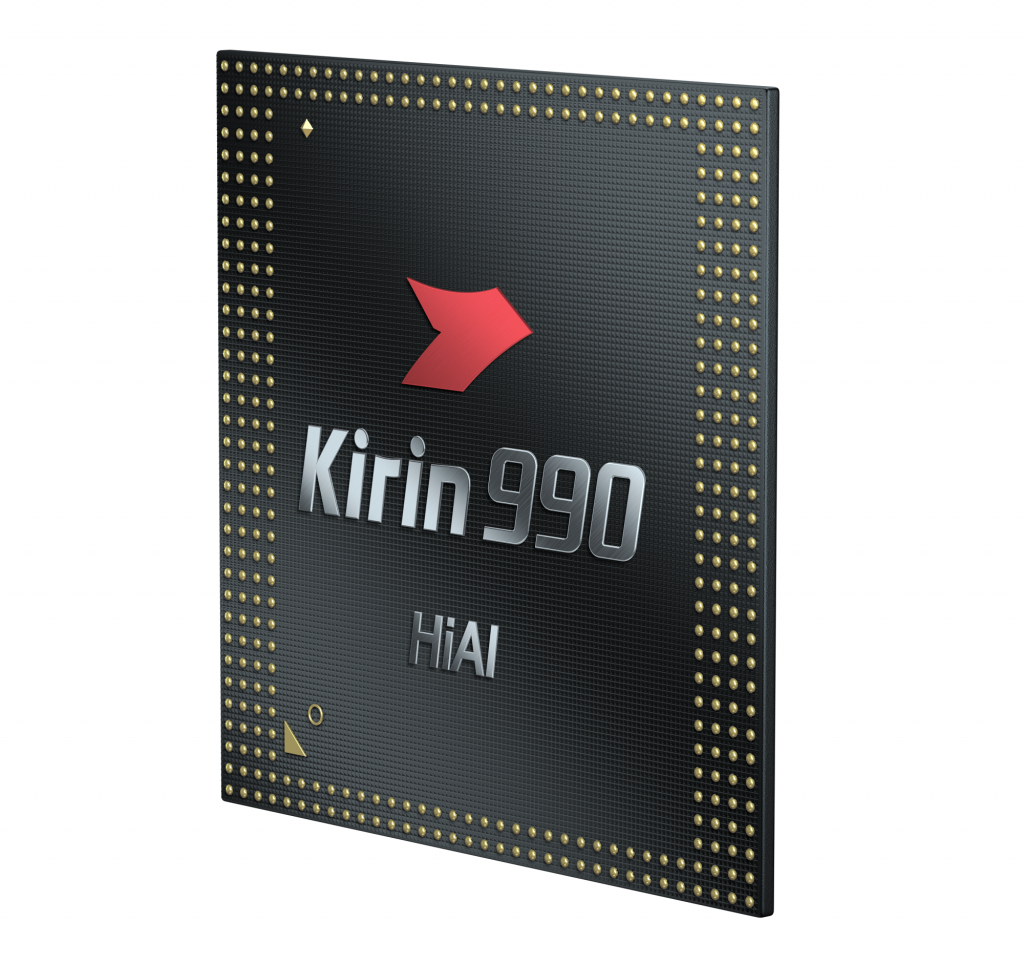
The Kirin 990 comes in two variants – one that supports 4G networks and another with 5G capabilities.
Most notably, the 5G version has support for the next-generation networks built-in, meaning an external modem is not required.
We hear plenty of people saying 5G skills are unwarranted right now but as 3 year contracts are commonplace, we would rather buy a handset that is ready for tech coming in the next 1-2 years.
Mate 30 Pro – Neat tricks
We saw a demo of the Mate 30 Pro’s AI gesture control. Using the front-facing sensors you can interact with the screen without touching it. For example, we were able to scroll through web pages simply by waving our hand. Additionally, using another gestrure we could perform screen captures.
Auto Rotate is cool and all but it can be easily confused, especially if you’re reading in bed or on the sofa. However, AI Auto Rotate can detect your head movements and rotate the screen from portrait to landscape automatically as you move around.
We also really liked AI Private View. Here your privacy is further enhanced. The phone is able to detect if there’s
Mate 30 Pro battery
Of course, we were unable to test the battery life on the Huawei Mate 30 Pro, but we’d expect it to be excellent with its 4500mAh cell inside. There’s fast-charging technology on offer, plus fast wireless charging.
Mate 30 Pro first impressions
Huawei has certainly created the best Mate yet with the 30 Pro.
The Mate 30 Pro has it all – a fantastic display, impressive stamina, and excellent picture quality, all of which hinges on class-leading performance.
It is just rubbish timing that the ‘leader of the free world’ as decided to prevent the company from pre-installing Google apps for its users. Knowing full well that his decision makes the Mate 30 Pro practically unusable in the Western world without some sideloading antics which could open the phone up to security concerns.
Nevertheless, as Walter Ji told us, Huawei has faced challenges throughout its 32 years and this is just another one to overcome.
However, the moment Google gets the license to provide products and services to Huawei, then you will see Samsung, Apple and all the rest run for cover.
Price and availability
We haven’t got an exact release date for the Mate 30 or even if it will ever come to the UK.
Huawei gave pricing of €799 for the Mate 30 and €1,099 for the Mate 30 Pro. The 5G model has an asking price of €1,199.

